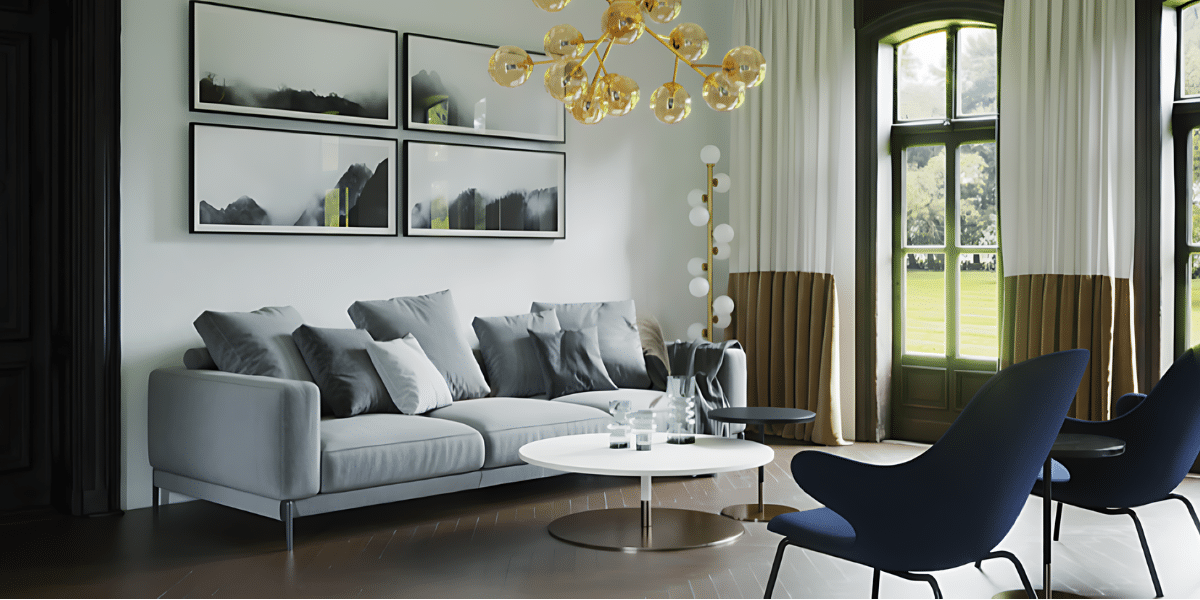Photorealism in 3D model renderings exemplifies digital creativity by attempting to replicate reality with such accuracy that differences from actual photographs become imperceptible. That requires a thorough approach encompassing various facets of the rendering process. Lighting is pivotal, replicating the interplay of light and shadow for depth and atmosphere. Texture mapping adds authenticity, applying detailed textures mimicking real-world materials. Attention to detail is paramount, with even the smallest elements contributing to believability. Advanced rendering software empowers artists with potent tools, enhancing realism. Composition and framing are vital in formulating natural and immersive scenes. Artists constantly expand the possibilities of 3D model renderings and blur the line between digital art and reality through skill, technique, and technological advancements.
Practicing Lighting Techniques for Photorealism
The basic knowledge of lighting techniques is essential to producing lifelike photorealistic 3D model renderings results. The interplay between light and shadow is not merely a technical aspect but an art form. It is crucial to understand how light acts in different atmospheres and how it interacts with textures. Artists meticulously craft scenes, strategically placing light sources to create the desired mood and atmosphere. Shadows add depth and dimension, grounding objects within the virtual space. Moreover, techniques such as global illumination and ray tracing simulate real-world lighting conditions, exalting the realism of the renderings. Furthermore, attention to details like color temperature, intensity, and directionality of light sources enhances the scene’s authenticity.
Elevating Realism Through Texture Mapping
Texture mapping is fundamental to achieving photorealism in 3D model renderings, enriching surfaces with intricate details and tactile qualities. It involves the application of textures to virtual objects, mimicking the look and feel of real-world materials. Artists meticulously select and apply textures, considering factors such as scale, roughness, and reflectivity to depict surfaces accurately. Whether it’s the grain of wood, the sheen of metal, or the softness of fabric, texture mapping breathes life into digital creations, adding depth and authenticity to every element. Advanced displacement and regular mapping techniques further enhance realism by simulating intricate surface details without significantly increasing the computational load. By acquiring the art of texture mapping, artists imbue their renderings with a sense of tangibility, inviting viewers to immerse themselves in virtual worlds where every surface tells a story.
Control in Detailing: Improving Realism with Minute Elements
In the pursuit of photorealism in 3D model renderings, attention to detail emerges as a paramount factor, where the minor elements contribute significantly to the overall authenticity of the scene. From fine lines to subtle textures, every detail matters in recreating the complexity of the physical world within the digital realm. Artists meticulously sculpt and refine every aspect of their models, ensuring that even the tiniest features are composed. Whether the intricate patterns on a piece of furniture or the subtle imperfections on a weathered surface, these details add layers of realism that captivate the viewer’s gaze.
Furthermore, realism extends beyond visual fidelity to encompass the narrative conveyed through these details. Each scratch, crack, or smudge tells a story, infusing the rendering with a sense of history and character. Through meticulous detailing, artists breathe life into their creations, inviting viewers to explore and engage with the virtual environment on a deeper level, where every element serves a purpose in enriching the narrative and heightening the overall sense of realism.
Implementing Rendering Software for Realistic Results
For photorealistic 3D model renderings, the choice and mastery of rendering software play a pivotal role in achieving lifelike results. Modern rendering engines offer many tools and features designed to simulate real-world lighting, materials, and effects with unprecedented accuracy. Artists leverage these capabilities to bring their creative visions to life, pushing the boundaries of realism in digital art.
From physically-based rendering (PBR) algorithms to advanced shaders and material editors, rendering software empowers artists to control every aspect of the rendering process with precision and finesse. Moreover, the integration of real-time rendering technology enables artists to iterate rapidly and experiment with different lighting setups, textures, and effects in a dynamic virtual environment.
Compelling Scenes through Composition and Framing
In the quest for photorealism in 3D model renderings, composition, and framing are critical elements in creating immersive and captivating scenes. Much like in traditional photography and cinematography, the arrangement of elements within the frame profoundly influences the viewer’s perception and emotional response.
Composition involves deliberately arranging objects, textures, and lighting within the virtual space to create visually harmonious and engaging compositions. Artists carefully consider balance, symmetry, leading lines, and the rule of thirds to direct the viewer’s eye and evoke specific moods and emotions.
Framing, on the other hand, refers to selecting camera angles, focal lengths, and perspectives to highlight vital elements of the scene and establish a sense of spatial context and depth. By experimenting with different framing techniques, artists can manipulate scale, proportion, and perspective to enhance their renderings’ realism and narrative impact.
Refining Realism Through Post-Processing Marvel
Post-processing is the final frontier in pursuing photorealism in 3D model renderings, allowing artists to fine-tune and polish their creations to perfection. Through editing techniques and digital manipulation, artists can elevate the realism of their renderings and imbue them with a sense of polish and refinement.
One of the primary objectives of post-processing is to enrich the overall visual adherence of the rendering. That may involve adjusting colors, contrast, and saturation for a more lively look. Additionally, artists can apply various filters and effects to simulate real-world phenomena such as lens flares, depth of field, and atmospheric haze, further blurring the line between reality and fiction.
Furthermore, post-processing allows artists to correct imperfections and errors that may have occurred during the rendering process, ensuring that the final result meets their exacting quality standards. From removing noise and artifacts to smoothing out rough edges and enhancing fine details, every adjustment adds to the prevailing realism and believability of the scene.
Summary
To sum it up, achieving photorealism in 3D modeling requires a meticulous blend of lighting mastery, texture mapping finesse, attention to detail, advanced rendering software utilization, thoughtful composition, and strategic post-processing. The association of these elements not only hazes the perimeters between the digital and physical but also invites viewers into immersive landscapes where the minutiae of realism tell compelling stories. With the evolution of technology, the pursuit of photorealism is conveying the infinite chances available in the expanding vocation of 3D modeling, where creativity is unrestricted.
Published by: Holy Minoza

















